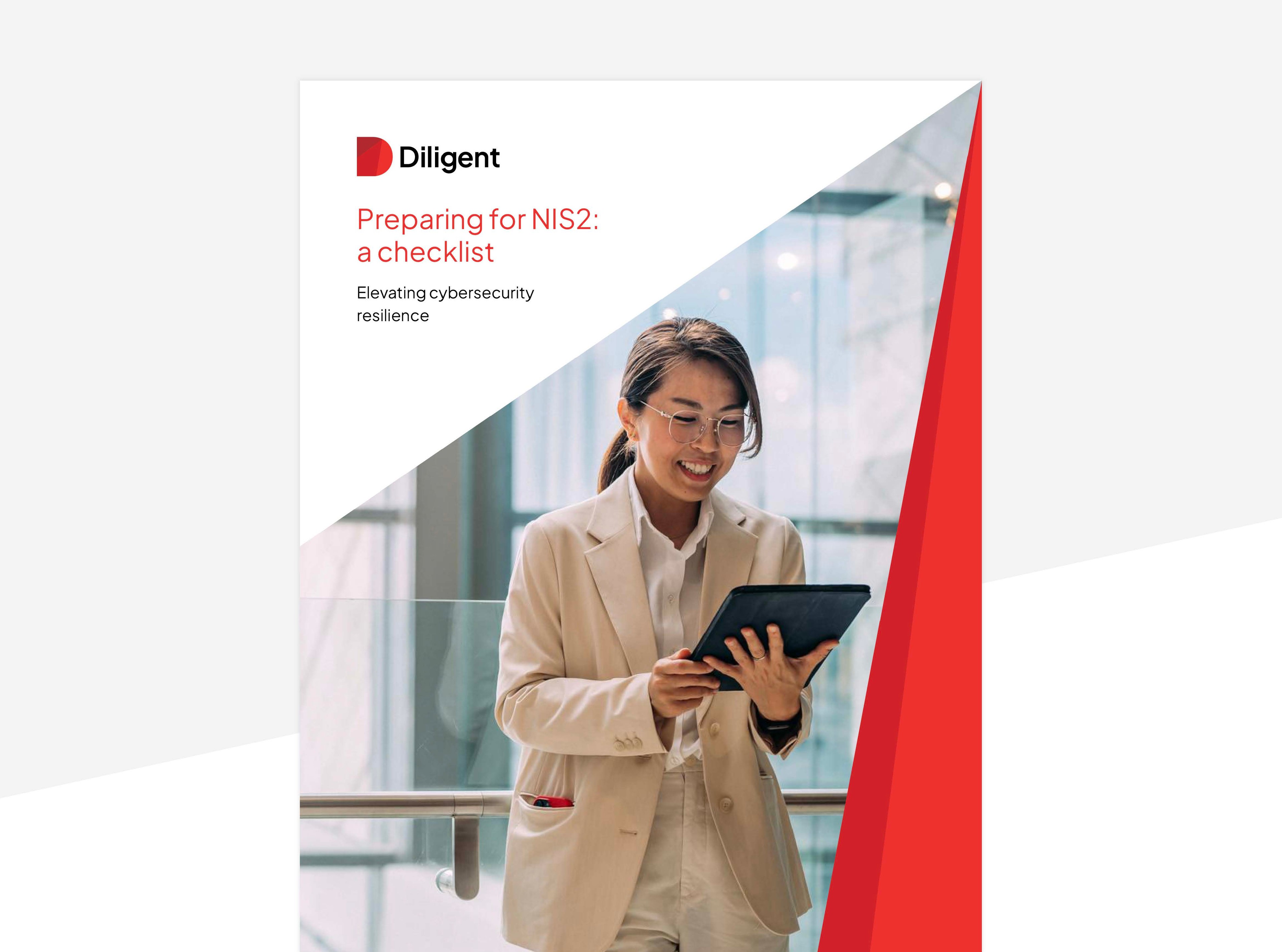NIS2 webinar: Adopting a risk-based approach for compliance

Our NIS2 webinar provides essential insights into the EU's Network and Information Systems (NIS2) Directive, emphasizing the need for organizations to adopt a risk-based approach to cybersecurity. Experts speakers Nick Frost and Nils Müller discussed key strategies for compliance and highlighted the importance of collaboration between cybersecurity and legal teams.
The EU's NIS2 Directive presents significant challenges for organizations striving to enhance their cyber resilience. We recently held a NIS2 webinar with guests Nick Frost, the Co-founder and CPO of Cyber Risk Management Group and Nils Müller, Partner at Eversheds Sutherland, which provided valuable insights into the directive's implications and the essential steps required to comply effectively.
Nick Frost, Co-founder and CPO of Cyber Risk Management Group, shares insights in our NIS2 webinar
In the above clip from our NIS2 webinar, Nick Frost, the Co-founder and CPO of Cyber Risk Management Group, outlined four considerations for adopting a risk-based approach to cybersecurity. These steps are crucial in today’s landscape, where cyber threats are increasingly sophisticated and organizations are heavily reliant on digital systems.
Here are the considerations Frost considers key to successful NIS2 compliance:
- Risk assessment: Conducting comprehensive risk assessments is fundamental for understanding the cyber risks an organization faces. Establishing a consistent methodology to assess, analyze and evaluate these risks enables organizations to prioritize their cybersecurity efforts effectively. This process involves identifying critical business areas and determining the necessary level of controls to safeguard these assets.
- Risk governance: Integrating cyber risk management into the overall governance framework of an organization is vital. Cyber risk should be a key component of risk committees or enterprise risk management structures. By doing so, organizations can better align cybersecurity efforts with business objectives, ensuring that decisions made at the top are informed by a clear understanding of cyber risks. This integration also facilitates a unified approach to managing risks across the enterprise.
- Risk monitoring: Given the dynamic nature of cyber threats, ongoing risk monitoring is essential. This involves staying abreast of changes in the external environment, such as geopolitical shifts, and their potential impact on the organization's risk profile. Internally, organizations must monitor changes in their business operations, such as new vendor relationships or technological adoptions, which could introduce new vulnerabilities.
- Risk reporting: Effective risk reporting is perhaps one of the most challenging yet crucial aspects of a risk-based approach. It requires translating technical cybersecurity issues into a language that stakeholders and decision-makers can understand and act upon. Collaboration between cybersecurity and legal teams is invaluable here, as legal experts can help articulate the implications of cyber risks in a business context, thus enhancing the clarity and impact of risk reports.
The implementation of these considerations not only strengthens an organization’s cybersecurity posture but also ensures compliance with NIS2's requirements. Importantly, the directive calls for a proactive stance on cybersecurity, demanding that organizations assume breaches will occur and prepare accordingly. This preparation includes establishing clear protocols for incident response and ensuring timely notifications to relevant authorities in the event of a significant incident.
Click here to view our full NIS2 webinar on-demand.
Additional insights from our NIS2 webinar
Furthermore, the webinar highlighted the importance of collaboration between cybersecurity and legal teams. This partnership is essential for effective risk management and compliance, as it combines technical expertise with legal acumen to address the multifaceted challenges posed by cyber threats and regulatory obligations.
Adopting a risk-based approach to cybersecurity is not merely a compliance requirement under NIS2; it is a strategic imperative. By focusing on risk assessment, governance, monitoring and reporting, organizations can navigate the complexities of NIS2 and build a robust defense against the ever-evolving landscape of cyber threats. Business leaders must embrace this proactive approach and foster collaboration across their teams to ensure their organization’s resilience and compliance in the digital age.
Stay ahead of compliance with Diligent
After you've watched our full NIS2 webinar, download our NIS2 checklist to ensure visibility over cybersecurity performance, with effective controls and monitoring to deliver the assurance needed by senior leaders.
Keep exploring

Preparing for NIS2: A checklist to elevate cybersecurity resilience
If your organisation is one of the estimated 160,000 directly affected by the NIS2 directive, you need to prepare. This checklist explains how.

NIS2 training for boards: Learn to protect your network & stay compliant
Read our blog to meet the varied demands of the NIS2 Directive and learn how Diligent can support your NIS2 training.

Promoting secure information sharing and managing ICT risks: Key requirements for the DORA compliance deadline
Discover key requirements for complying with the EU's Digital Operational Resilience Act (DORA).

The NIS2 Directive: Are you ready to raise the bar on cyber resilience?
The NIS2 Directive requires a unified approach to GRC and visibility across all areas of cybersecurity and third-party risk to deliver the assurance management bodies need.